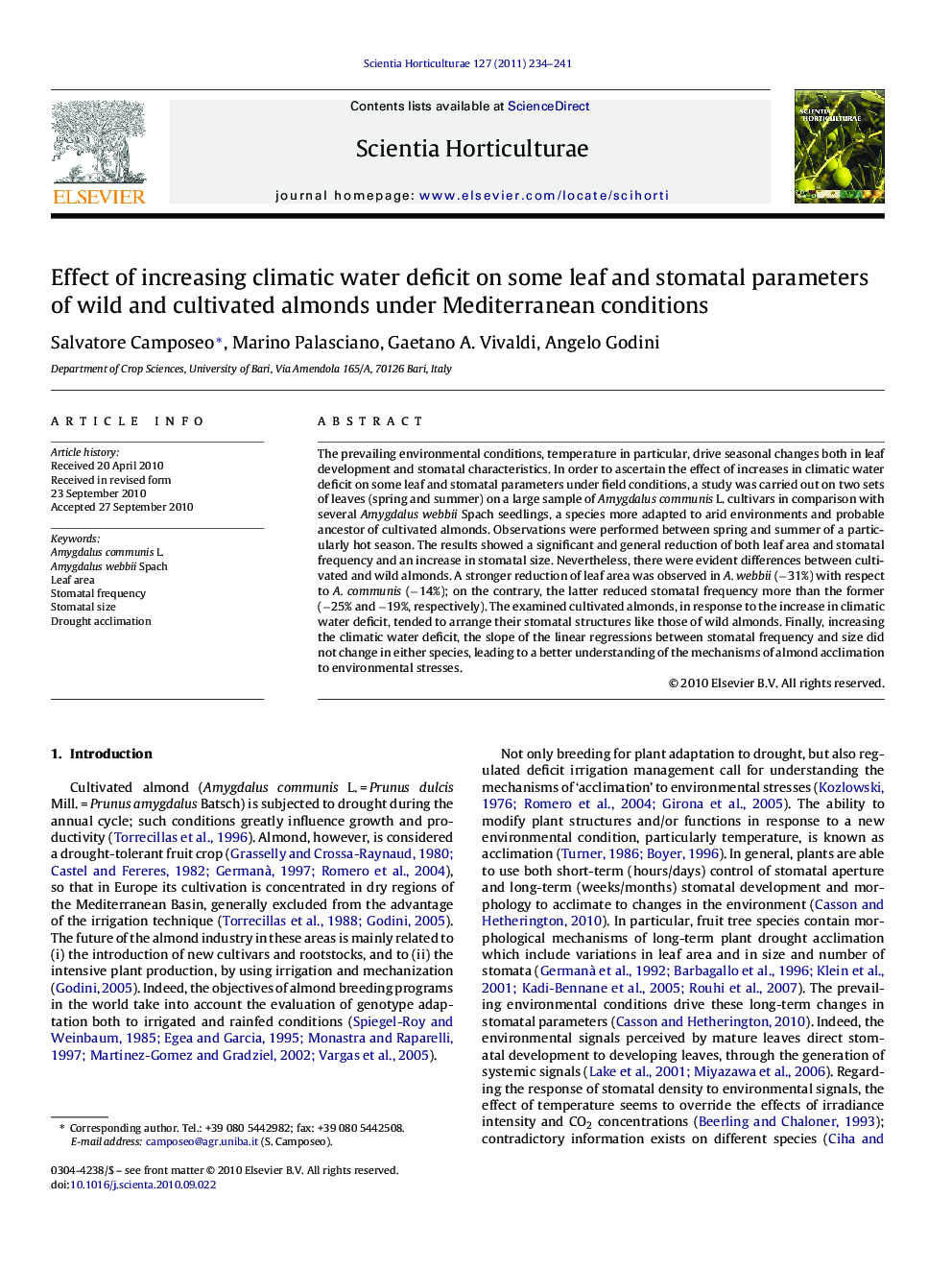| کد مقاله | کد نشریه | سال انتشار | مقاله انگلیسی | نسخه تمام متن |
|---|---|---|---|---|
| 4568152 | 1331289 | 2011 | 8 صفحه PDF | دانلود رایگان |

The prevailing environmental conditions, temperature in particular, drive seasonal changes both in leaf development and stomatal characteristics. In order to ascertain the effect of increases in climatic water deficit on some leaf and stomatal parameters under field conditions, a study was carried out on two sets of leaves (spring and summer) on a large sample of Amygdalus communis L. cultivars in comparison with several Amygdalus webbii Spach seedlings, a species more adapted to arid environments and probable ancestor of cultivated almonds. Observations were performed between spring and summer of a particularly hot season. The results showed a significant and general reduction of both leaf area and stomatal frequency and an increase in stomatal size. Nevertheless, there were evident differences between cultivated and wild almonds. A stronger reduction of leaf area was observed in A. webbii (−31%) with respect to A. communis (−14%); on the contrary, the latter reduced stomatal frequency more than the former (−25% and −19%, respectively). The examined cultivated almonds, in response to the increase in climatic water deficit, tended to arrange their stomatal structures like those of wild almonds. Finally, increasing the climatic water deficit, the slope of the linear regressions between stomatal frequency and size did not change in either species, leading to a better understanding of the mechanisms of almond acclimation to environmental stresses.
Research highlights▶ Both species reduced leaf area and stomatal frequency but increase stomatal size. ▶ Almond cultivars reduced stomatal frequency rather than leaf area. ▶ Wild almonds decreased leaf area rather than stomatal frequency. ▶ Almond cultivars tended to arrange their stomata like those of wild almonds. ▶ Stomatal frequency and size regressions slope did not change in either species.
Journal: Scientia Horticulturae - Volume 127, Issue 3, 10 January 2011, Pages 234–241